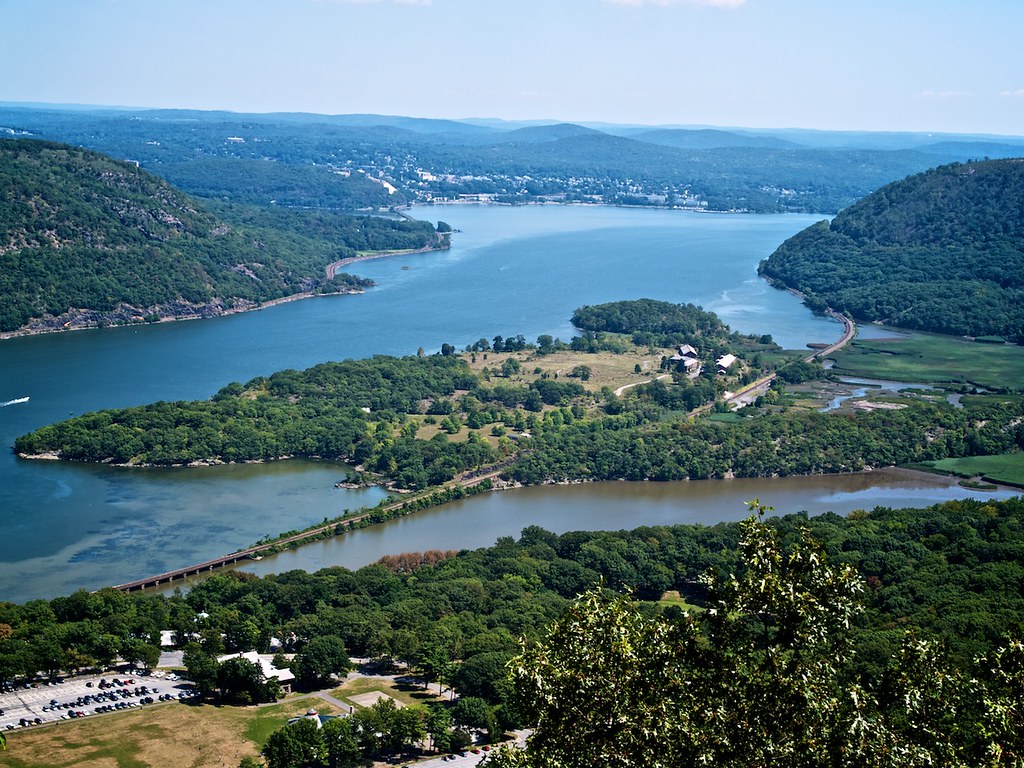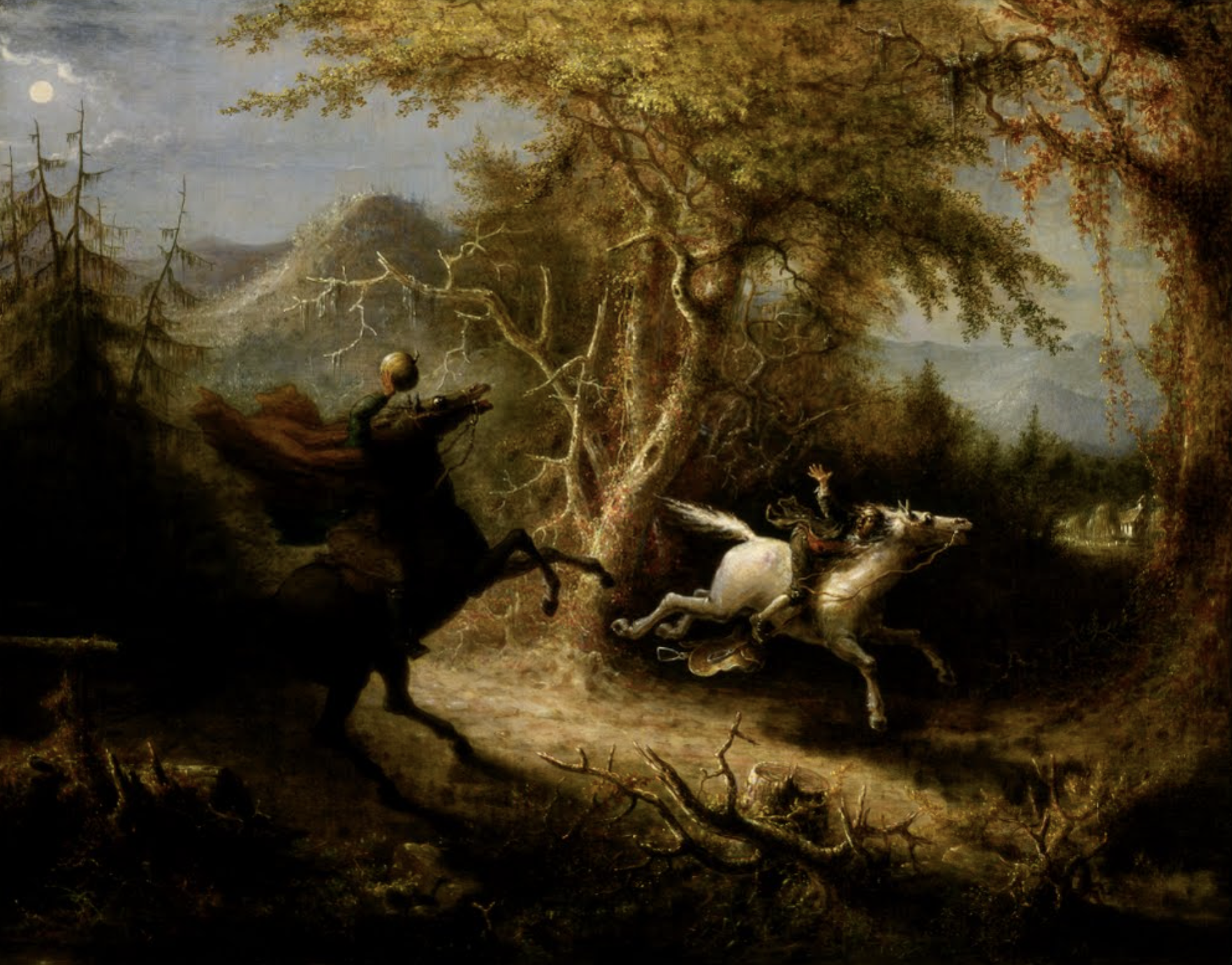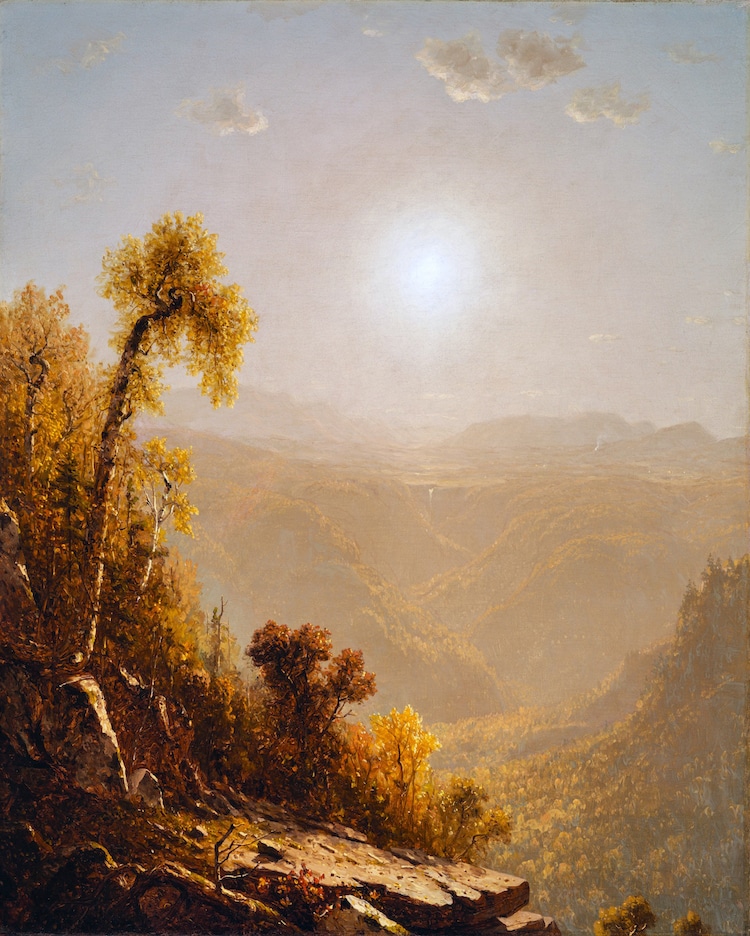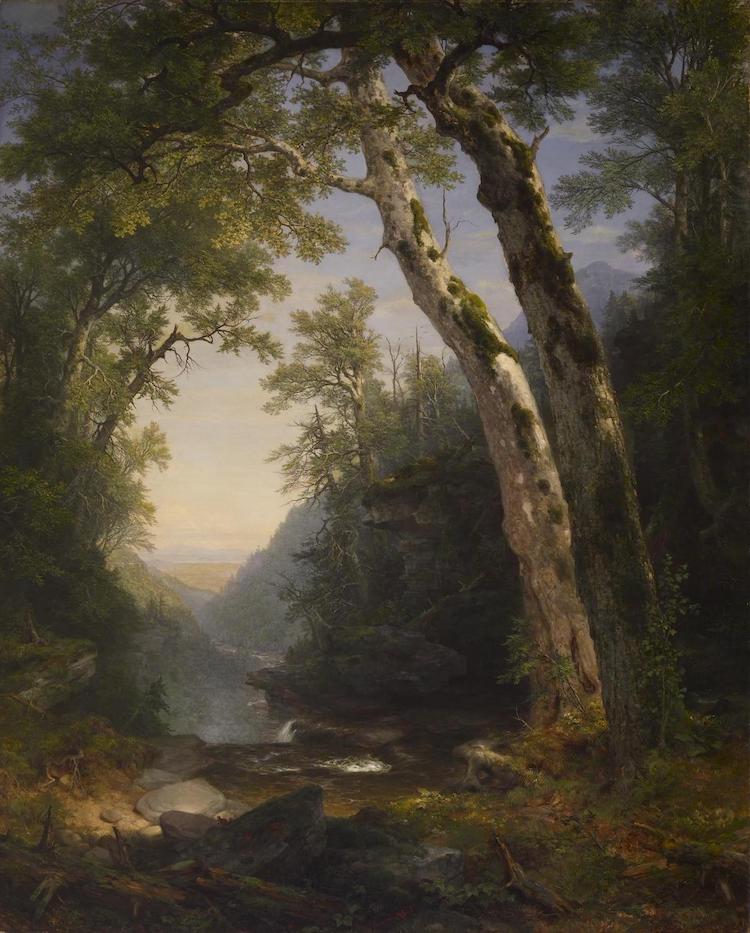
“The Hudson River is a 315-mile (507 km) river that flows from north to south primarily through eastern New York in the United States. It originates in the Adirondack Mountains of Upstate New York and flows southward through the Hudson Valley to the Upper New York Bay between New York City and Jersey City, eventually draining into the Atlantic Ocean at New York Harbor. Wikipedia
The  Headless Horseman Pursuing Ichabod Crane
Headless Horseman Pursuing Ichabod Crane
John Quidor1858
“During the eighteenth century, the river valley and its inhabitants were the subject and inspiration of Washington Irving, the first internationally acclaimed American author. In the nineteenth century, the area inspired the Hudson River School of landscape painting, an American pastoral style, as well as the concepts of environmentalism and wilderness.” Wikipedia
“During the 19th century, a group of American painters dedicated themselves to cultivating a style that would have its roots in the New World, rather than looking back to Europe. Inspired by the untamed landscape of their surroundings and filled with ideas of exploration, these landscape painters helped create what is now known as the Hudson River School.

“October in the Catskills” by Sanford Robinson Gifford, 1880. (Photo: Public domain via Wikipedia)
“In these landscapes, the environment is filled with drama and emotion. The wide, expansive spaces are dappled with warm color, as depictions of man are eschewed in favor of the terrain. From 1825 until its popularity began to decline around 1870, the group of artists associated with these heroic landscapes helped shape the way we view early America.
“From the early work of British-born émigré Thomas Cole to the oil paintings of Albert Bierstadt and Frederic Edwin Church, these landscape paintings were often the first depictions of parts unknown. Whether they are views of Yosemite Valley and the American West to glimpses of South America, these paintings are the testimony of a critical time in American history and the development of native art culture.

“View on the Catskill—Early Autumn” by Thomas Cole, 1836–37. (Photo: Public domain via Metropolitan Museum of Art)
“…the resulting wild landscapes became a symbol for the unconquered continent. The love for untamed nature was something not typically seen in European landscapes, making the work decidedly American.
“At the same time, these depictions of wide-open spaces, ready to be settled, gave hope to a population coming out of the war. Fresh and unspoiled, this new terrain was free from the scars of battle. As a whole, these paintings point to the spirit of adventure, freedom, and discovery that exemplified the nation during this critical time in history. …
“Thomas Cole, who is generally known as the father of the movement, spent a significant amount of time in the area after taking a steamboat up the Hudson in 1825. From there, he hiked the Catskills and the resulting paintings are the first landscapes of the area. Once Cole died in 1848, the mantel was taken up by a second generation of painters who expanded the locations of the landscapes. …

“The Catskills” by Asher Brown Durand, 1859. (Photo: Public domain via Wikipedia)
Stewart, Jessica. “How the Hudson River School Became America’s First Art Movement.” My Modern Met, Sept. 2019, mymodernmet.com/hudson-river-school.
“The Hudson River School was a mid-19th century American art movement embodied by a group of landscape painters whose aesthetic vision was influenced by Romanticism. The paintings typically depict the Hudson River Valley and the surrounding area, including the Catskill, Adirondack, and White Mountains.” Wikipedia
“Hudson River School paintings reflect three themes of America in the 19th century: discovery, exploration, and settlement.[2] They also depict the American landscape as a pastoral setting, where human beings and nature coexist peacefully. Hudson River School landscapes are characterized by their realistic, detailed, and sometimes idealized portrayal of nature, often juxtaposing peaceful agriculture and the remaining wilderness which was fast disappearing from the Hudson Valley just as it was coming to be appreciated for its qualities of ruggedness and sublimity.[3] In general, Hudson River School artists believed that nature in the form of the American landscape was a reflection of God,[4] though they varied in the depth of their religious conviction. They were inspired by European masters such as Claude Lorrain, John Constable, and J. M. W. Turner.” Wikipedia
Thomas Cole, A View of the Two Lakes and Mountain House, Catskill Mountains, Morning, 1844, Brooklyn Museum of Art
Thomas Cole, A View of the Two Lakes and Mountain House, Catskill Mountains, Morning, 1844, Brooklyn Museum of Art

Thomas Cole (1801–1848), The Oxbow, View from Mount Holyoke, Northampton, Massachusetts, after a Thunderstorm (1836), Metropolitan Museum of Art
Thomas Cole is generally acknowledged as the founder of the Hudson River School.[6] He took a steamship up the Hudson in the autumn of 1825, stopping first at West Point then at Catskill landing. He hiked west high into the eastern Catskill Mountains of New York to paint the first landscapes of the area. The first review of his work appeared in the New York Evening Post on November 22, 1825.[7] Cole was from England and the brilliant autumn colors in the American landscape inspired him.[6] His close friend Asher Durand became a prominent figure in the school, as well.”[8]

Asher Brown Durand, The Catskills, 1859, Walters Art Museum